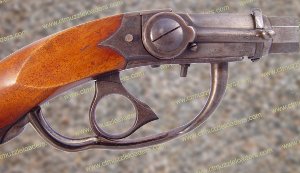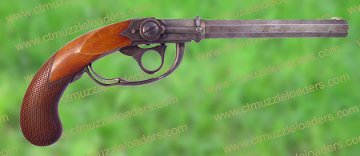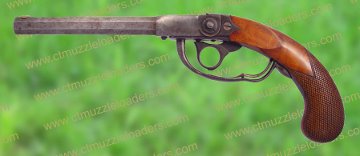An Elegant Set of Pistols
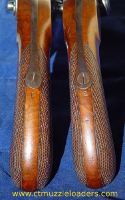
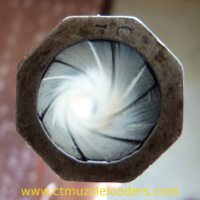
The pistols are slim and elegant, weighing only 1.9 lbs, with checkered, bag-shaped grips which bring them quickly to hand. I am uncertain of their original purpose; they are marked '1' and '2', which suggests they were originally part of a cased set, so they could have been for target shooting and/or dueling. Their caliber (22 bore) is large for strictly target pistols of their period, but their 1/18" twist rifling was acceptable for dueling in Europe, so they could have seen 'dual' use. It is also possible that they were a pair of officer's cavalry pistols, since they are easily and quickly loaded, and the wide triggerguard used in the Löebnitz system was ideal for shooting while wearing gloves. Single shot Danish cavalry pistols of the period show the same ring-hole cocking spur, although on a sidelock
Aside from the butt markings, there are no other markings whatsoever on the pistols, I believe them most likely to be from Löebnitz's workshop, since he was the only gunsmith that I know of who used this idiosyncratic trigger-guard sear system. If so, this would make them of Danish origin in the period between abour 1840-1850. If anyone has other information, please let me know.
Marvels of Simplicity
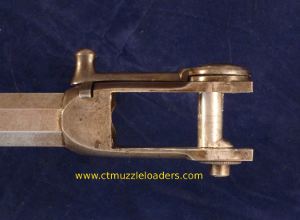
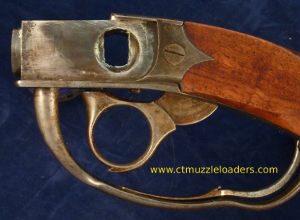
The pistols are marvels of simplicity; the action is controlled by the eccentric crank on the pistol's right side, which when moved up, separates the barrel from the chamber. In the photogrqaph on the left, you can see the eccentric crank, which acts in the rectangular hole seen in the right photo. When drawn apart by the crank, the two sections can then swing open, allowing rapid loading. The chamber accepts a powder charge of about 25 grains behind a 0.60 caliber round ball. Swinging the sections back in line and closing the crank forces the chamber and barrel tightly together, limiting gas escape. This is similar to the mechanism I designed for my breechloading flintlock pistol.
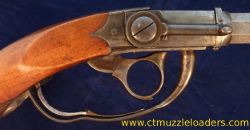
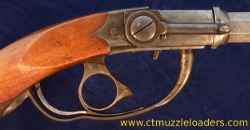
The firing mechanism is equally simple; there is a notch at the tip of the hammer which engages a sear inside the trigger guard; when the rear of the trigger guard is squeezed, the hammer is released and strikes the below-chamber nipple. A small screw in the trigger guard controls the trigger let-off. The main spring is internal, and there are no other mechanisms. Note that there is no specific safety mechanism on the pistols. While I felt this may have made them unsafe to carry while loaded, it occurred to me that if the hammer were let down on the cap, the trigger guard protected the hammer from any external blows and so accidental discharge was probably no more likely than with a standard half-cock safety.
Loading and Firing
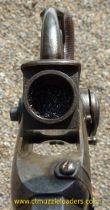
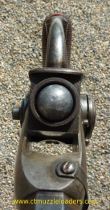
The photograph to the left, looking at the underside of the pistol with the barrel swung up, shows the
kammerlader chamber loaded with 25 grains of Swiss 2F powder, the maximum it will hold and a reasonable load
for a pistol like this. The photo to the right shows the .60 caliber ball on top of the powder. The original
would have most likely used a paper cartridge with the ball or short Minie-like projectile
dipped in tallow for lubrication. Here, after loading the ball, a ring of Wonder Lube was placed around the
chamber rim.
The ballistic results were:
| Ball weight | MV | fpe |
| 290 gr | 510 | 168 |
This is a very effective weapon!
*Update
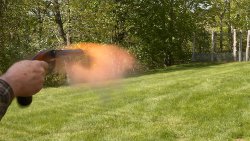 Click on
the image to see a video showing the loading and firing of the kammerlader.
Click on
the image to see a video showing the loading and firing of the kammerlader.
